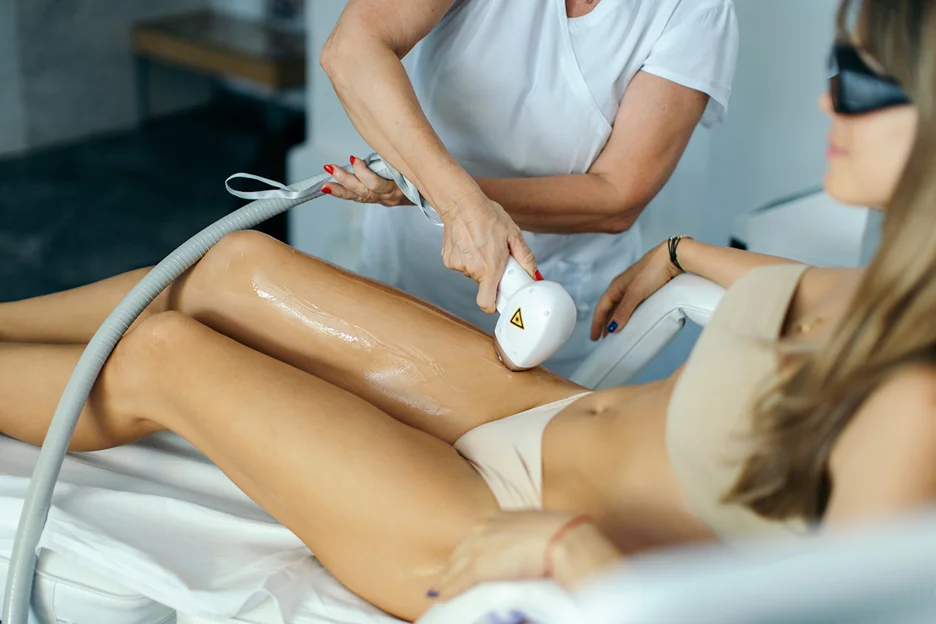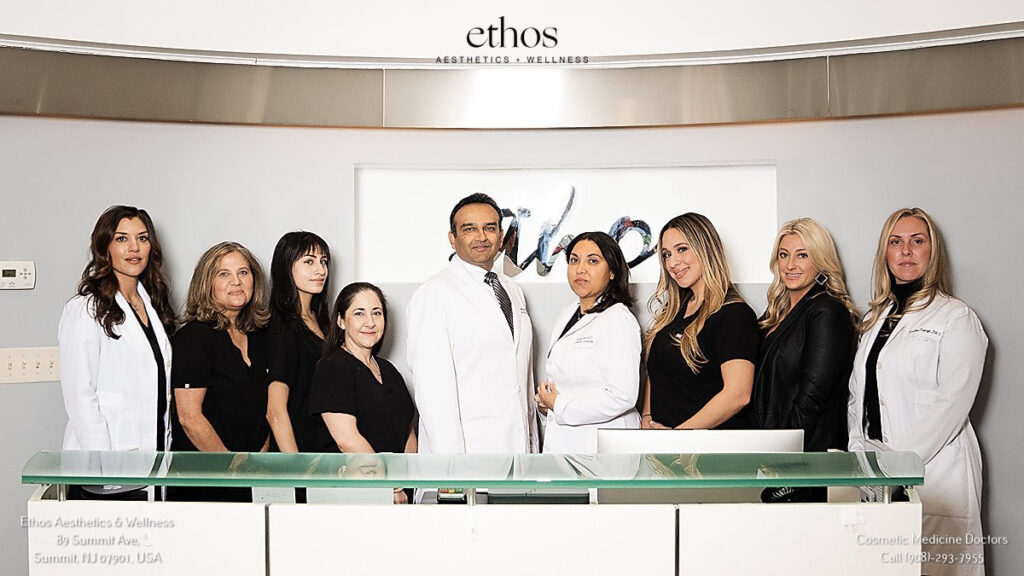Sun Kissed or Sun Risked? Understanding the Impact of Sun Exposure on Laser-Treated Skin
Laser hair removal provides a route to smooth, hair-free skin. But how does sun exposure affect treatment? In this comprehensive guide, Dr. Hardik Soni of Ethos Aesthetics + Wellness shares expert insights on maximizing results and safety.
Don’t let sun exposure stand in the way of your hair removal goals. Connect with the experts at Ethos Aesthetics + Wellness for personalized care.
The Science Behind Laser Hair Removal
Laser hair removal utilizes concentrated beams of light to target the pigment in hair follicles. The light is absorbed by the pigment, destroying the follicle so unwanted hair cannot regrow.
There are several types of lasers used:
- Alexandrite lasers work best for light skin with dark hair.
- Nd:YAG lasers are safe for darker skin tones.
- Diode lasers are good for light to medium skin with dark hair.
During treatment, the laser emits short pulses of intense light at the skin. Each pulse lasts just milliseconds but causes thermal damage to the follicles. Generally 6-8 treatments spaced 4-6 weeks apart are needed for optimal long-term reduction.
Over the course of treatments, the pigmented follicles are selectively targeted and eliminated while the surrounding skin remains unharmed.
Why Sun Exposure Matters Pre and Post Treatment

Sun exposure is a primary concern both before and after laser hair removal treatments for several key reasons:
Increased Sensitivity
Recent sun exposure causes skin to be more photosensitive, meaning it absorbs more laser energy. This can increase the risks of burns, blisters, and scarring.
Risk of Hyperpigmentation
Suntanned skin contains more melanin. For optimal results, lasers work best on paler skin with maximum contrast between hair and skin color. A tan can compete with hair for absorption, leading to less effective treatment. Excess melanin may also cause post-treatment hyperpigmentation.
Potential Complications
Sun exposure can result in complications like redness, itching, blistering, and a change in skin color or texture. Avoiding the sun protects the skin and minimizes side effects.
Delayed Healing
Sunburned skin takes longer to heal. Post-treatment redness and sensitivity will persist for a longer recovery if the skin has suffered recent sun damage.
By taking smart precautions with sun exposure, patients can achieve the best possible laser hair removal results safely and effectively.
Understanding Skin Types and Laser Hair Removal
Skin type is a critical factor influencing both sun sensitivity and the effectiveness of laser hair removal. Here’s how:
Melanin Level and Sun Sensitivity
Melanin, the pigment in your skin, plays a dual role in determining your skin’s reaction to laser treatment and the sun.
Lighter skin has less melanin, making it more susceptible to sun damage but also more responsive to laser hair removal due to less risk of unwanted pigment changes.
Conversely, darker skin contains more melanin, providing natural protection against the sun but requiring careful adjustment of laser intensity to avoid complications.
This intrinsic photosensitivity must be carefully considered before, during, and after laser procedures.
Hair Color Contrast
The contrast between the color of your skin and your hair significantly affects the success of laser hair removal.
The ideal scenario is fair skin with dark, coarse hair, allowing the laser to target the hair effectively without harming the surrounding skin.
In cases of darker skin with lighter hair, treatments become more challenging, often demanding specialized techniques and equipment for effective and safe hair removal.
At Ethos Aesthetics + Wellness, Dr. Soni customizes parameters for each patient’s specific skin type to maximize safety and results. Schedule a consultation to determine your personalized approach.
Safety First: Risks of Laser Hair Removal After Sun Exposure

Undergoing laser hair removal too soon after sun exposure heightens the risk of side effects like:
- Burns or blisters from increased laser energy absorption in sun-damaged skin
- Post-inflammatory hyperpigmentation from excess melanin production
- Increased baseline redness and slower healing times
- Scarring and permanent skin texture and color changes from severe burns
- Less effective treatment since the laser preferentially targets melanin in tanned skin rather than hair pigment
To avoid these complications, Dr. Soni advises patients to:
- Avoid extended sun exposure and tanning for 4-6 weeks pre-treatment
- Postpone laser sessions until any sunburn has fully healed
- Use SPF 30+ broad spectrum protection year-round
- Check skin complexion at consultations to determine if a tan could impact safety or results
Following sun protection protocols minimizes risks for the best possible outcome.
Finding the Best Time for Treatments
Ideal timing for laser hair removal considers two factors: sun exposure and hair growth cycles.
Sun Exposure Perspective
The least sunny times of year are best to minimize skin sensitivity. For most locations, fall, winter, and early spring have lower UV levels.
Some guidelines:
- In colder climates, schedule treatments in October through April
- In warmer climates, target November through February
- Avoid peak summer sun when skin is most likely suntanned
Coordinate sessions during cooler seasons when practical based on your climate. Adjust plans if an unexpected tan occurs by postponing until it fades.
Hair Growth Cycles
Laser only eliminates actively growing hairs. For maximum impact each session, time treatments when hair is in its growth phase:
- Underarms: Schedule in June/July and November/December
- Bikini Area: Target in March/April and October/November
- Lower Legs: Optimal timing is in July/August and November/December
Discuss your specific growth cycles with Dr. Soni to customize a schedule around optimizing results.
Caring for Skin Post-Treatment
Properly caring for skin after laser hair removal is vital to avoid sun damage during the healing process. Follow these tips:
Avoid Direct Sunlight
Stay out of direct sun for at least 2 weeks post-treatment. If unavoidable, vigilantly apply SPF 30+ broad spectrum sunscreen.
Cover Up
Wear wide-brimmed hats or tightly-woven clothing over treated areas if going outside. Seek shade whenever possible.
Use High SPF Lotions
Apply broad spectrum SPF 30+ sunscreen to treated areas whenever indoors near windows or outdoors. Reapply every 90 minutes.
Stay Hydrated
Drink extra water and apply aloe vera gel to soothe skin and reduce irritation from sun sensitivity.
Watch for Signs of Damage
Check for excessive redness, swelling, itching, or blistering which may indicate sunburn. Notify Dr. Soni about any concerns.
Following the doctor’s post-care protocol speeds healing and protects your investment in smooth, hair-free skin.
Sun Exposure and Laser Hair Removal: Expert FAQs with Dr. Soni

Still have questions about managing sun exposure through laser hair removal treatments? The team at Ethos Aesthetics + Wellness addresses some frequently asked questions to guide you through the process:
How soon after a sunburn can I undergo laser hair removal safely?
Our experts recommend waiting at least two weeks after any sunburn to allow your skin to fully heal. Treating sunburned skin too soon increases the risk of side effects due to heightened sensitivity.
What SPF is strong enough to protect my skin pre and post-treatment?
We advise using a broad-spectrum SPF 30 sunscreen on the areas being treated. Apply it thickly 15-30 minutes before sun exposure and reapply every 90 minutes, especially if you’re outdoors for extended periods.”
Can I get laser hair removal if I have a farmer’s tan?
Having a farmer’s tan can increase the risk of skin irritation and other complications during laser treatment. Our practice recommends letting such tans fade completely before proceeding with laser procedures.
Is it okay to use tanning beds between my laser hair removal sessions?
Indoor UV tanning poses similar risks to outdoor sun exposure and should be avoided pre and post-laser hair removal treatments. We strongly discourage the use of tanning beds during this period.
How long before a beach vacation should I stop laser hair removal treatments?
To minimize the risk of photosensitivity reactions, it’s best to pause laser treatments at least 6 weeks before any planned beach vacations, especially if you intend to sunbathe.
Ready to learn more? Contact Ethos Aesthetics + Wellness to schedule your consultation with Dr. Soni.







